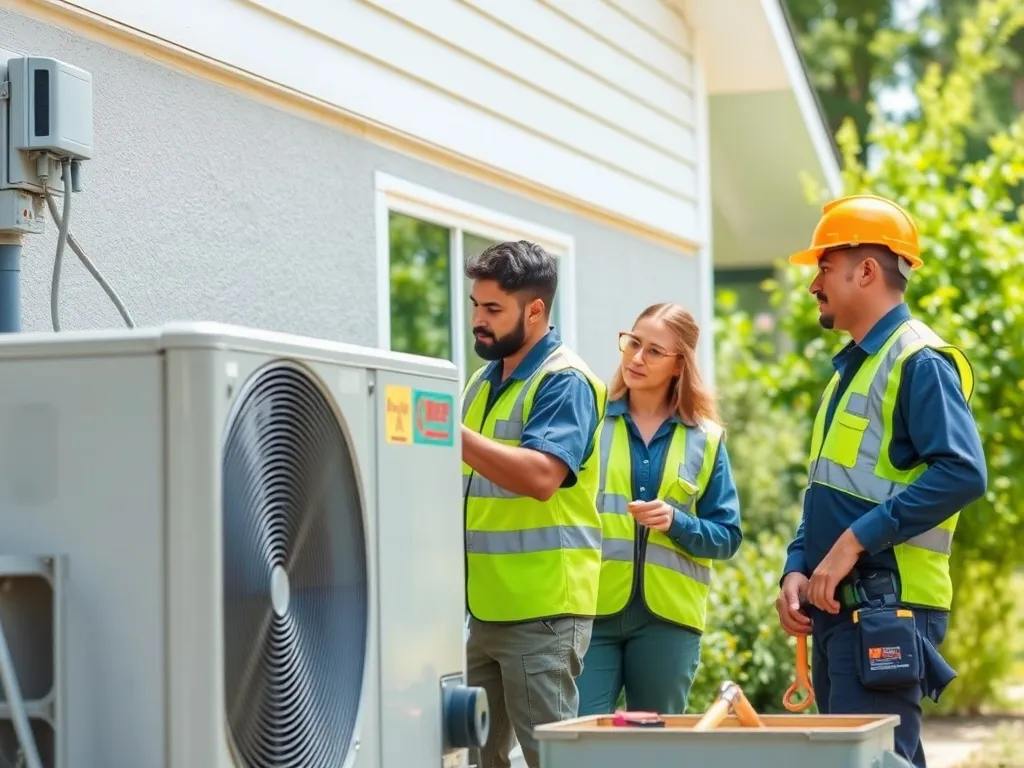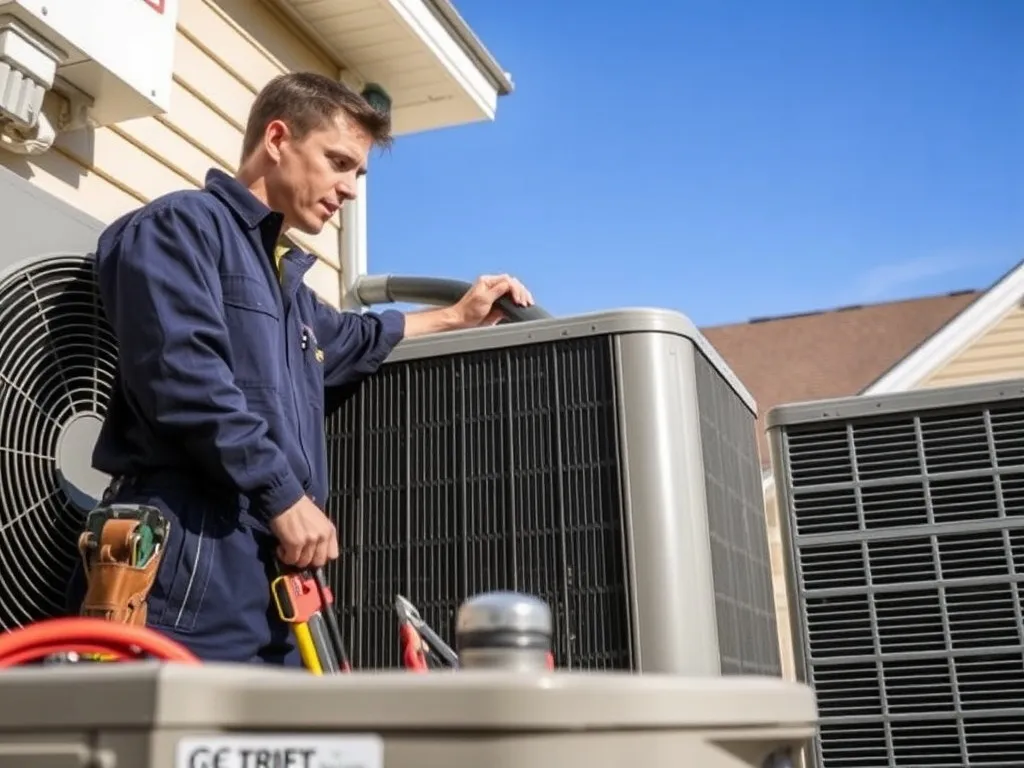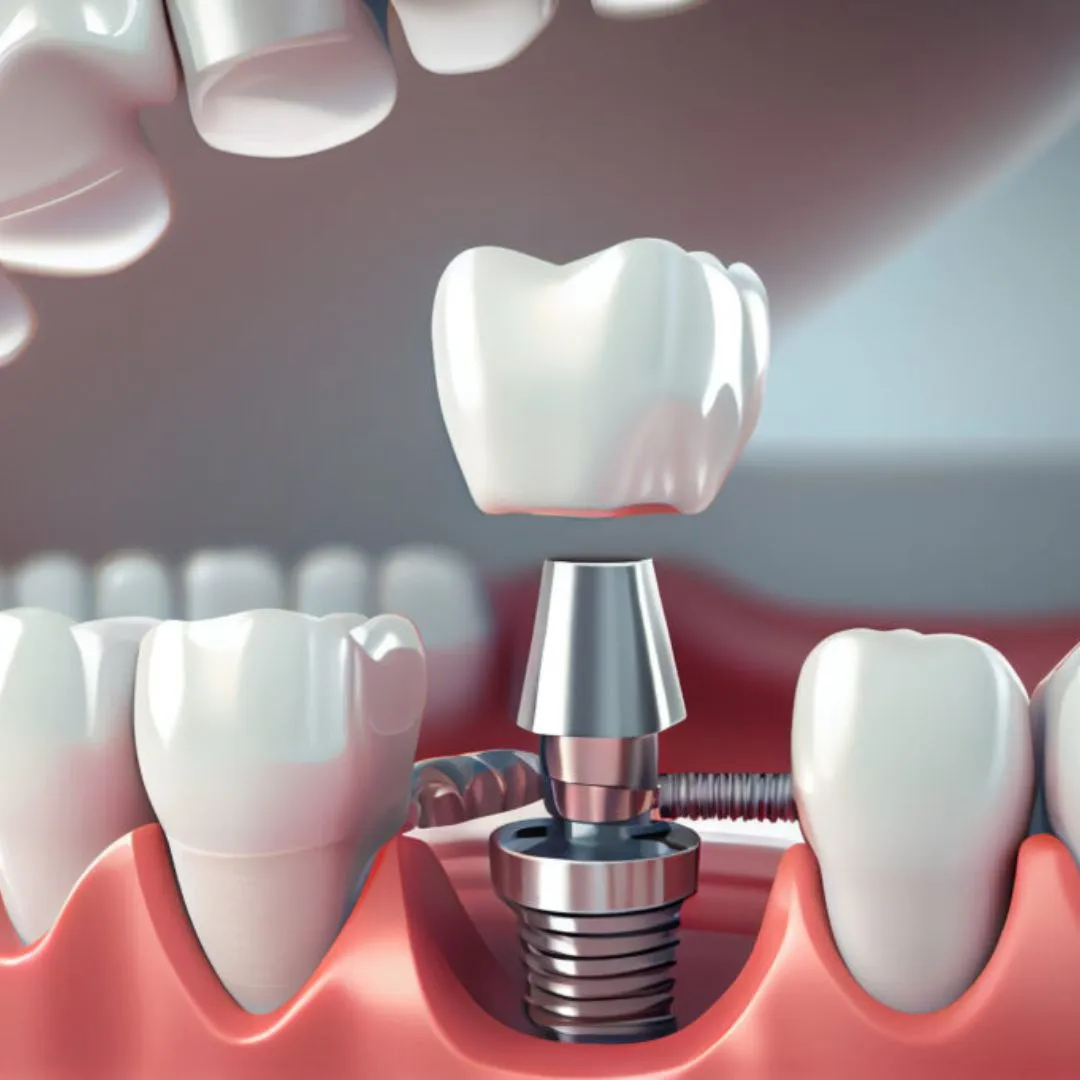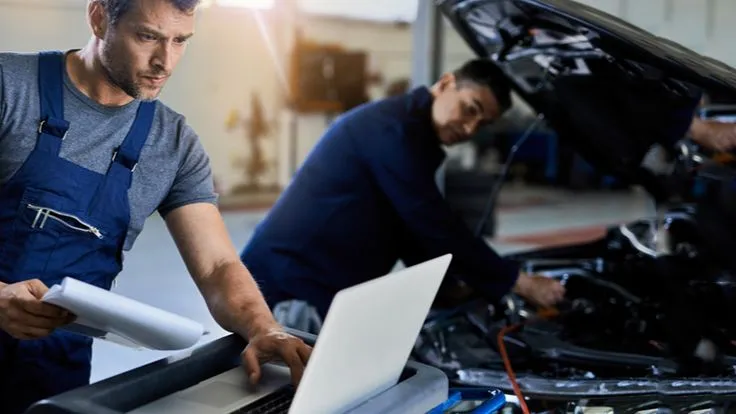Mastering Comfort: A Comprehensive Guide to HVAC Services for Your Home and Business
In the modern world, consistent indoor comfort is not a luxury—it’s an expectation and a necessity. At the heart of this comfort is the HVAC system, which stands for Heating, Ventilation, and Air Conditioning. These complex systems regulate temperature, humidity, and air quality, making them crucial for health, productivity, and property preservation. Understanding the full spectrum of professional HVAC services is the first step in ensuring your equipment runs efficiently year-round, protecting your investment and comfort.
This comprehensive guide will walk you through the essential services offered by professionals, from emergency Air conditioning repair to detailed installation, and replacement of entire climate control systems. By prioritizing expert care, you can maintain a comfortable, energy-efficient, and healthy indoor environment.

1. The Foundation: Understanding Essential HVAC Services
HVAC services encompass a wide range of technical work designed to keep your climate control systems—furnaces, air conditioners, heat pumps, and ventilation units—running smoothly. These services move far beyond simple repairs; they are a proactive investment in your home's infrastructure and your family's well-being. A qualified technician provides the expertise needed to handle the complex mechanical, electrical, and chemical aspects of modern heating and cooling technology.
The primary goal of professional HVAC services is to maximize efficiency, extend equipment lifespan, and ensure peak performance, especially during extreme weather. Ignoring minor issues can lead to costly and inconvenient breakdowns. By partnering with a reliable HVAC provider, you are ensuring that a trained expert is available to address every aspect of your system, from routine checks to complex system integrations. These services are foundational to long-term indoor comfort and operational savings.
2. When Disaster Strikes: Emergency Air Conditioning Repair
Few things are worse than an air conditioning unit failing on the hottest day of the year. This is where emergency Air conditioning repair becomes a critical service. Professional HVAC companies offer rapid response times to diagnose and fix critical malfunctions, restoring comfort quickly and safely. Common emergency issues include compressor failure, refrigerant leaks, or serious electrical faults that prevent the unit from turning on or cooling effectively.
When calling for emergency Air conditioning repair, a skilled technician will arrive with the necessary diagnostic tools and often common replacement parts to address the issue immediately. They prioritize safety, first checking for dangerous electrical problems or gas leaks before performing mechanical repairs. Having a trustworthy provider for emergency HVAC services ensures that your inconvenience is minimal and that the repair is done correctly, preventing further damage to the system's vital components.
3. The Lifecycle Begins: Expert Installation of New Systems
The process of installation is the single most important factor determining the long-term performance and efficiency of a new HVAC system. An incorrectly sized or poorly installed unit will inevitably lead to higher energy bills, frequent breakdowns, and a shorter lifespan, negating the savings you expected from the new equipment. Professional HVAC services begin with a detailed load calculation (often called a Manual J calculation) to correctly size the unit based on your building's unique characteristics, such as square footage, insulation, window placement, and local climate.
This precise sizing prevents the system from "short cycling," which is a common cause of premature wear and inefficient operation. During the installation phase, technicians ensure proper duct sealing, correct refrigerant charging, and precise electrical wiring, all of which are essential for the system to meet its manufacturer-rated efficiency. Choosing a certified HVAC contractor for your initial installation is the best way to secure maximum comfort and the lowest utility bills.
4. The Inevitable Upgrade: Seamless Replacement Services
Eventually, every HVAC system reaches the end of its useful life, typically between 10 and 15 years for an air conditioning unit and 15 to 20 years for a furnace. When Air conditioning repair costs begin to outweigh the cost of a new system, it's time for a professional replacement. Modern units are significantly more energy-efficient than those manufactured even a decade ago, meaning a replacement can immediately lead to substantial long-term savings on energy costs.
A complete replacement service involves carefully removing the old, outdated equipment and installing a new, high-efficiency model. This process often includes updating other components, such as the thermostat (to a modern smart thermostat) and necessary wiring or refrigerant lines, to meet current efficiency standards. Technicians performing the replacement will also ensure proper disposal of the old unit, including the safe reclamation of refrigerants, adhering to environmental regulations and making the upgrade process hassle-free for the homeowner or business owner.
5. The Proactive Approach: Routine Maintenance and Tune-Ups
Preventative maintenance is the cornerstone of effective HVAC services. Scheduling an annual tune-up for your cooling system in the spring and your heating system in the fall can dramatically reduce the likelihood of needing emergency Air conditioning repair. During these routine service calls, a technician cleans the coils, checks refrigerant levels, lubricates moving parts, and tightens electrical connections.
5.1 The Importance of Annual AC Tune-Ups
An annual AC tune-up ensures the system runs at peak efficiency. Dirty coils and low refrigerant levels are the two biggest factors that cause an air conditioning unit to work harder, consume more electricity, and potentially overheat.
5.2 Benefits of Regular Maintenance
- Higher Efficiency: Maintained units consume less power, lowering utility bills.
- Extended Lifespan: Regular checks catch minor wear and tear before it becomes a catastrophic failure.
- Improved Air Quality: Cleaning and replacing filters remove allergens and dust from the air.
6. The Heart of the Matter: Ductwork Inspection and Sealing
The most powerful and efficient HVAC system is only as good as the ductwork distributing the air. In many homes, up to 30% of conditioned air is lost through leaks, holes, and poorly connected joints in the duct system. Professional HVAC services include comprehensive duct inspection and sealing, which can have an immediate and measurable impact on energy efficiency and indoor comfort.
Sealing leaky ducts prevents conditioned air from escaping into unconditioned spaces (like attics or crawlspaces) and stops unconditioned air, moisture, and dust from being pulled into the system. Duct cleaning is another specialized service that removes years of accumulated dust, mold, and allergens, especially important for households with allergy or respiratory concerns. Addressing the ductwork is a crucial step to maximize the benefit of a new installation, and replacement project.
7. Improving Indoor Air Quality (IAQ) Solutions
Beyond temperature, the quality of the air you breathe is a primary focus of modern HVAC services. Poor Indoor Air Quality (IAQ) can exacerbate asthma and allergy symptoms and even lead to long-term health issues. HVAC professionals offer a range of solutions to clean and treat the air flowing through your home or business.
7.1 Advanced Air Filtration and Purification
- HEPA Filters: High-Efficiency Particulate Air filters capture extremely small particles, including pollen, pet dander, and dust mites.
- UV Lights: Installed inside the HVAC unit or ductwork, Ultraviolet (UV) lights kill airborne mold spores, bacteria, and viruses as they pass through the system.
- Air Scrubbers: These devices actively remove pollutants and odors from the air, providing a comprehensive purification solution.
7.2 Humidity Control
Managing humidity is vital for both comfort and health. High humidity can encourage mold growth and make warm air feel stifling, while low humidity can cause dry skin and damage wood furniture. Technicians can integrate whole-house humidifiers or dehumidifiers into your existing HVAC system.
8. Financial Planning: Warranties and Service Agreements
A major component of professional HVAC services involves helping customers protect their investment through warranties and service agreements. All new installation projects come with a manufacturer's warranty covering parts, but proper maintenance is usually required to keep that warranty valid. Your HVAC provider may offer an additional labor warranty on their installation work.
Service agreements, often called maintenance plans, are contracts that cover annual tune-ups and sometimes offer discounted rates on Air conditioning repair services. These agreements ensure that you don't forget preventative maintenance, which is essential for maximum equipment life. When considering a system replacement, always inquire about the length and conditions of both the parts warranty and the labor warranty to ensure long-term peace of mind.
9. The Evolution of Comfort: Smart HVAC Technology
Modern HVAC services are heavily focused on integrating smart technology to improve efficiency and user control. Smart thermostats are now standard components in many new installation, and replacement projects. These devices learn user habits, adjust temperature settings automatically, and can be controlled remotely via smartphone apps, leading to significant energy savings.
9.1 Advanced Diagnostic Tools
Technicians now use sophisticated digital tools to diagnose system issues with extreme precision. These tools can monitor refrigerant pressure, temperature fluctuations, and electrical loads in real-time. This advanced diagnostic capability speeds up Air conditioning repair times and improves the accuracy of problem-solving, ensuring the technician spends less time guessing and more time fixing the issue.
9.2 Integrating High-Efficiency Systems
Professional HVAC contractors are experts in installing advanced, high-efficiency equipment, such as Variable Refrigerant Flow (VRF) systems and Geothermal Heat Pumps. These systems represent the cutting edge of energy-efficient climate control and require specialized knowledge for proper installation and maintenance.
10. Choosing the Right Partner for Your HVAC Services Needs
Selecting the right HVAC contractor is crucial, whether you need a simple Air conditioning repair or a full system replacement. Not all providers offer the same level of expertise, certification, or customer service. A truly professional HVAC services company should be licensed, insured, and certified by industry organizations like NATE (North American Technician Excellence).
Here is a checklist for choosing your service provider:
- Certifications: Do they employ NATE-certified technicians?
- Insurance and Licensing: Are they fully licensed and insured to work in your area?
- Track Record: Do they have a history of positive customer reviews for installation, and replacement services?
- Guarantees: Do they offer guarantees on their repair or installation work?
Choosing a reputable partner ensures that every aspect of your HVAC services, from routine maintenance to emergency Air conditioning repair, is handled with the highest degree of professionalism and technical competence.
Conclusion
The health, comfort, and efficiency of your home or business rely heavily on the performance of your HVAC system. Comprehensive HVAC services—encompassing everything from preventative maintenance to expert Air conditioning repair, precise new system installation, and professional replacement—are not mere expenses, but essential investments. By committing to regular, expert care, you ensure your equipment runs smoothly, your energy bills stay low, and your indoor environment remains perfectly comfortable, healthy, and safe, year after year.
Ready to secure the long-term performance and efficiency of your HVAC system? Contact a certified professional today to discuss your maintenance or replacement needs.











